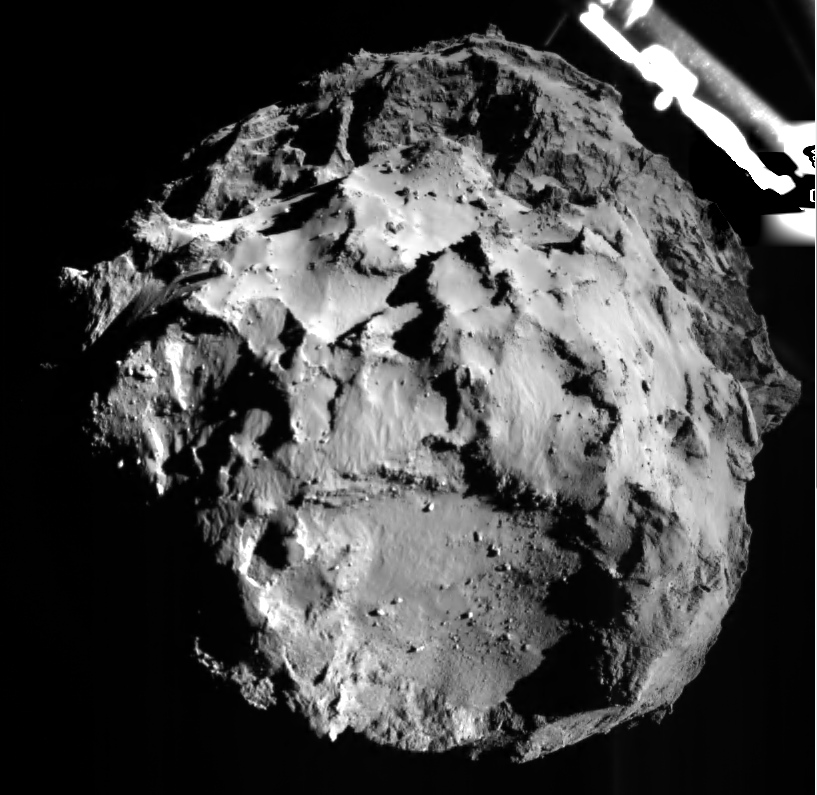So, last night was exciting. The European Space Agency’s (ESA) robotic spaceship Rosetta arrived at the comet 67P/Churyumov-Gerasimenko in early August, after an amazing journey comprising of over 10 years and four gravity slingshots. Last night, it separated from its lander module, Philae, and sent it to touch down on the surface of the comet.
What I’ve been able to gather from watching the live stream last night and what I saw on Twitter when I woke up groggily for 2 minutes at 5:15 this morning is that not everything went to plan, but the landing seems to have been successful.
Philae (the lander) has several devices to make the landing easier. One of these is a “cold gas thruster”, a small engine to push it gently into the surface of the comet so it wouldn’t bounce off (remember the comet has extremely little gravity relative to something like the Earth or Moon). This engine failed to start working before the spacecraft separated, but the team decided to go ahead with the landing anyway.
Another device Philae has to help with the landing is a pair of harpoons to skewer the surface, but these also failed to fire. As far as I know they’re not sure yet why they failed, but Philae did make it to the surface, so the comet landing was a success.
The ESA be getting data back from Philae but I don’t think they know yet how it landed or where exactly it is relative to the landing site. There’s a danger it could be on its side, for example, which would prevent some of the experiments it’s carrying on board from going ahead. Time will tell, though.
A photo of the comet taken from Philae when it was only 3 km away has been posted to the official Twitter account:

Photo credit to European Space Agency, ROLIS camera on Philae
UPDATE 2014/11/14
Since the landing a few other things have come to light. First, presumably because the harpoons failed to fire, Philae bounced of the surface twice. Although it bounced pretty much straight up, the comet was rotating beneath it so its final landing zone is a few hundred metres away.
Also, Philae has landed on its side. It’s still taking photographs and sending back data, so that’s good, but the fact that it’s on its side may mean that some of its experiments may not be able to go ahead. Phil Plait has a good write up explaining these updated on Bad Astronomy and Emily Lakdawalla has a more detailed one on her blog the Planetary Society.